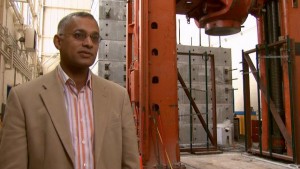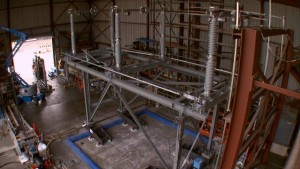In 2008, I produced a QUEST TV feature story called, "Hayward Fault: Predictable Peril" (UPDATED: The Hayward Fault: Overdue for Disaster). The story focused on the earthquake fault that runs from San Jose in the south to San Pablo Bay in the East Bay of the San Francisco Bay Area. A magnitude 7 earthquake occurred along this fault in 1868 that killed several people and destroyed buildings throughout the East Bay as well as in San Francisco. The 1868 quake was referred to as 'the great earthquake' prior to the epic 1906 earthquake that happened along the San Andreas fault.
The gist of the 2008 TV story was that geologists are now able to use special paleoseismic techniques to analyze earthquake faults and determine their seismic history over several thousand years. By noticing patterns in earthquake activity over long periods of time, they can also make predictions about when major events are likely to happen in the future. They determined that a major event of 6.8 or higher happens every 140 years or so on the Hayward Fault. It's been 143 since the last one.

A 2003 report by the USGS found that there is a 62% probability of at least one magnitude 6.7 or greater earthquake in the 3-decade interval 2003-2032 within the San Francisco Bay region. With odds like this, I'm grateful that there are people like Khalid Mosalam and his colleagues at the Pacific Earthquake Engineering Research Center's Shaking Table Laboratory who dedicate their careers to learning how to make the built environment that we live in, work in and travel on more safe in an earthquake.
I'd included about a minute of video from the Shaking Table Lab in the 2008 piece but I always regretted that I wasn't able to show more of this facility. So when we started putting together an entire episode focused around the theme of earthquakes, I thought a short segment about the Shaking Table would be perfect for this show.

When we were there shooting in 2008, they were testing some electrical substation switches which were interesting but definitely not as dramatic as some of the other structures they build and shake in three axes, often until collapse. The generous engineers at PEER were able to provide us some videos of other structures they tested including a two story house, a masonry wall and a bridge pier support. The 20' x 20' table is one of the largest in the world to be able to move in three directions (translation and rotation) so, according to Mosalam, it's an extremely important piece of equipment at UC Berkeley and has contributed to important research that will result in people being safer when the next 'big one' hits.